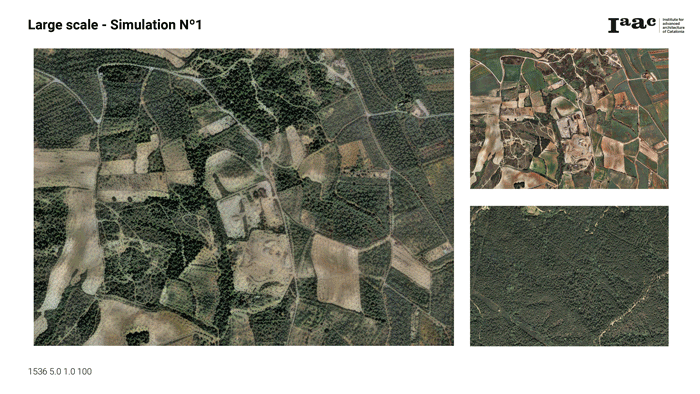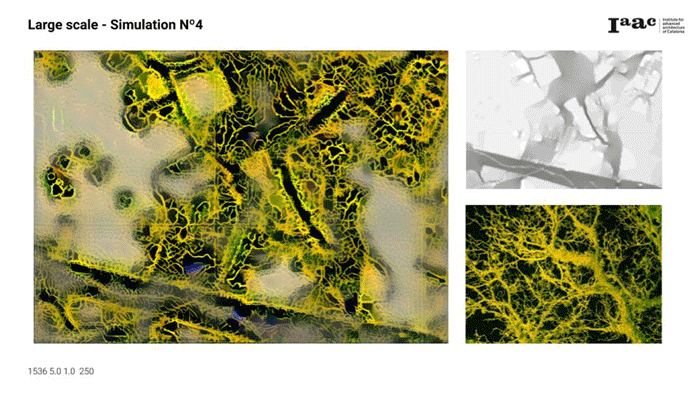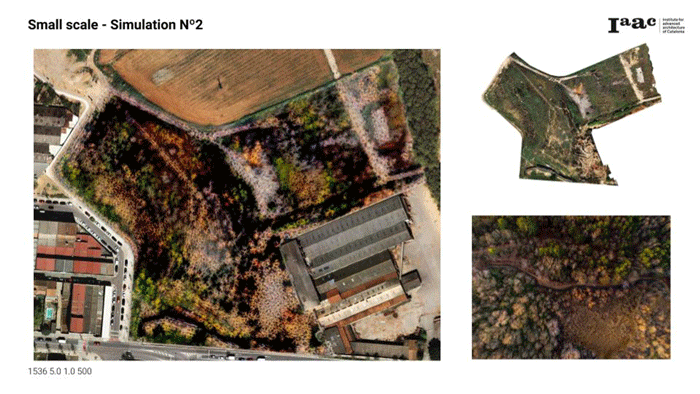ARTIFICIAL POLLINATION INTELLIGENT PATHS
During the 3 weeks workshop about Urban AI, we got the opportunity to work with Machine Learning and AI platforms such as Paperspace and ZBrush. We used them in order to obtain new inputs that could help us to push forward our project, both in the analytical and design stage.
Context of the project
The selected area represents one green corridor of the region of el Vallès, an area behind the city of Barcelona and surrounded by natural parks, which is characterized by an agroforestry habitat mixed with cities and industrial parks.
The idea of our project is to improve the connectivity of this corridor by using the abandoned crops distributed along the entire area, with an especially focus on pollination as an ecosystem service. The re-vegetation of the abandoned crops can be a good intervention to increase the surface suitable for the habitat of pollinators, mainly insects.
The project is based on 2 main concepts: abandoned crops and pollination: The first one represent an opportunity to improve the connection between natural and urbanised environment, while the second is the rewilding aspect to be enhanced, understood as an ecosystem service that has been introduced into an enlarge mutualistic interaction that already exists between plants and pollinators. In fact, this kind of interaction happens because each “mutualistic partner” has a benefit from the interaction. So far, humans have obtained many benefits from pollinators, now is time to understand that protecting pollinators is a way to protect ourselves.

Project theoretical framework

Pollination framework
Methodology
With the aim of analysing the corridor and design proper interventions that can promote corridors for pollinators, we used the AI tools on a large scale -in order to better understand how the area works- and on a small scale -trying to get inspiration about how an intervention-. could look like.
Large scale

Large scale analysis
Considering a large scale, after many simulations, we obtained a new style that fully represent an agroforestry habitat by merging a forest and farmland. Afterwards, this new style was used to convert the existing areas wilder, obtaining new textures and depth. On the other side, the urbanised areas were merged with a green fractal, trying to communicate the idea of getting nature into the city.

Fractal analysis
Small scale
To achieve a proper distribution of the pollination plants in one plot, we used these new tools to implement a texture of forest growth in the abandoned crop selected. Depths and distribution of plants were created.
Since we had a problem of scale, the idea was to create a new pattern as a style by merging a nolli complex map and a flower distribution image. This pattern was used again with the first output of vegetation in the plot so we could distribute the pollination suitable plants in our selected abandoned crop.

Small Scale Analysis
These new techniques allowed us to experience urban design in a different way, by allowing artificial intelligence to search for invisible patterns and behaviours for human eyes, in different scales and allowing the machine to design new ways of understanding urbanism
Artificial Pollination Intelligent Paths is a project of IAAC, Institute for Advanced Architecture of Catalonia developed at Master in City & Technology in 2020/21 by student: Adriana Aguirre Such, Matteo Murat, Riccardo Palazzolo, Simone Grasso and falculty: Sandra Manninger & Matias del Campo